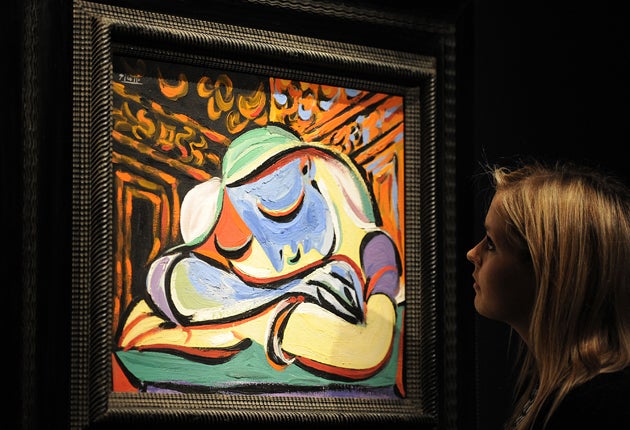
Your support helps us to tell the story
From reproductive rights to climate change to Big Tech, The Independent is on the ground when the story is developing. Whether it's investigating the financials of Elon Musk's pro-Trump PAC or producing our latest documentary, 'The A Word', which shines a light on the American women fighting for reproductive rights, we know how important it is to parse out the facts from the messaging.
At such a critical moment in US history, we need reporters on the ground. Your donation allows us to keep sending journalists to speak to both sides of the story.
The Independent is trusted by Americans across the entire political spectrum. And unlike many other quality news outlets, we choose not to lock Americans out of our reporting and analysis with paywalls. We believe quality journalism should be available to everyone, paid for by those who can afford it.
Your support makes all the difference.
What courses? Art history; history of art.
What do you come out with? A BA, surprisingly (they don’t call it a ‘bachelor of arts’ for nothing), or an MA in Scotland.
Why do it? "More and more we look at images – online, on television, on paper. But images are not passive; they carry meanings, suggest interpretations, allude to possibilities – and they mean one thing to one person and something else to another. The history of art, by analysing how images have functioned in past art and operate in contemporary work, trains us to look hard, to use seeing and questioning what we see as critical tools. It's an exciting discipline that puts us right into the middle of how a society works – by understanding how it looks. Never has that been so important as today." - Richard Thomson, Watson Gordon chair of fine art at the University of Edinburgh
What's it about? It kind of does what is says on the tin. It explores the fascinating history of art, from medieval to modern periods, and equips students with detailed contextual understanding and skills that allow them to analyze and criticize works of art. It’s not all dry and learning about what has been and gone, it’s to do with understanding why certain things in our visual environment make us feel the way we do - expect essays and seminars, as you are encouraged to take your newly acquired-knowledge and use it to form and communicate your own ideas and opinions. Traditionally, art history courses have focused on the ‘major’ art forms of painting, sculpture and architecture, although programmes have started catching up with modern definitions of what art is, and have began to look at graphic arts, photography and applied arts such as metalwork and furniture. Most courses focus on the history of art in the Western world, although Oxford allows students to explore further afield, offering courses in areas such as Chinese art.
Study options: Three years full-time constitute most degrees apart from in Scotland, where you study a four-year MA. However, many universities offer a year abroad if studied with a foreign language – an opportunity that many art history students choose not to miss out on because of the rich cultural history in places like France and Spain, and the plethora of galleries and museums across the continent.
What will I need to do it? Most courses do not ask for specific A-levels, although some do require you to have completed an essay-based subject. Surprisingly, artistic ability is usually not required to pursue a degree in art history, but a fascination with all things art is paramount. Predictably, the top institutions require equally impressive grades, with Cambridge asking for A*AA, Oxford AAA and St Andrews AAB (AABB at Scottish Highers).
What are my job prospects? Students typically flock to the cultural industries, be it in museums, galleries or with national and local authorities. However, some go into completely unrelated areas, using their transferable communication and analytical skills in the worlds of business, law and media. According to The Times’ Good University Guide 2012, only 28 per cent of graduates go into graduate-level jobs, although the average salary is not bad at £20,103. Almost one fifth of graduates go directly into further study.
Where’s best to do it? Thanks to its world class facilities and reputation, Cambridge topped the Complete University Guide 2012 for history of art, architecture and design, followed by the Courtauld Institute and Oxford. However, students at UEA were said to be most satisfied with their course.
Related degrees: Art; history; design; architecture; philosophy; archaeology.
Join our commenting forum
Join thought-provoking conversations, follow other Independent readers and see their replies
Comments